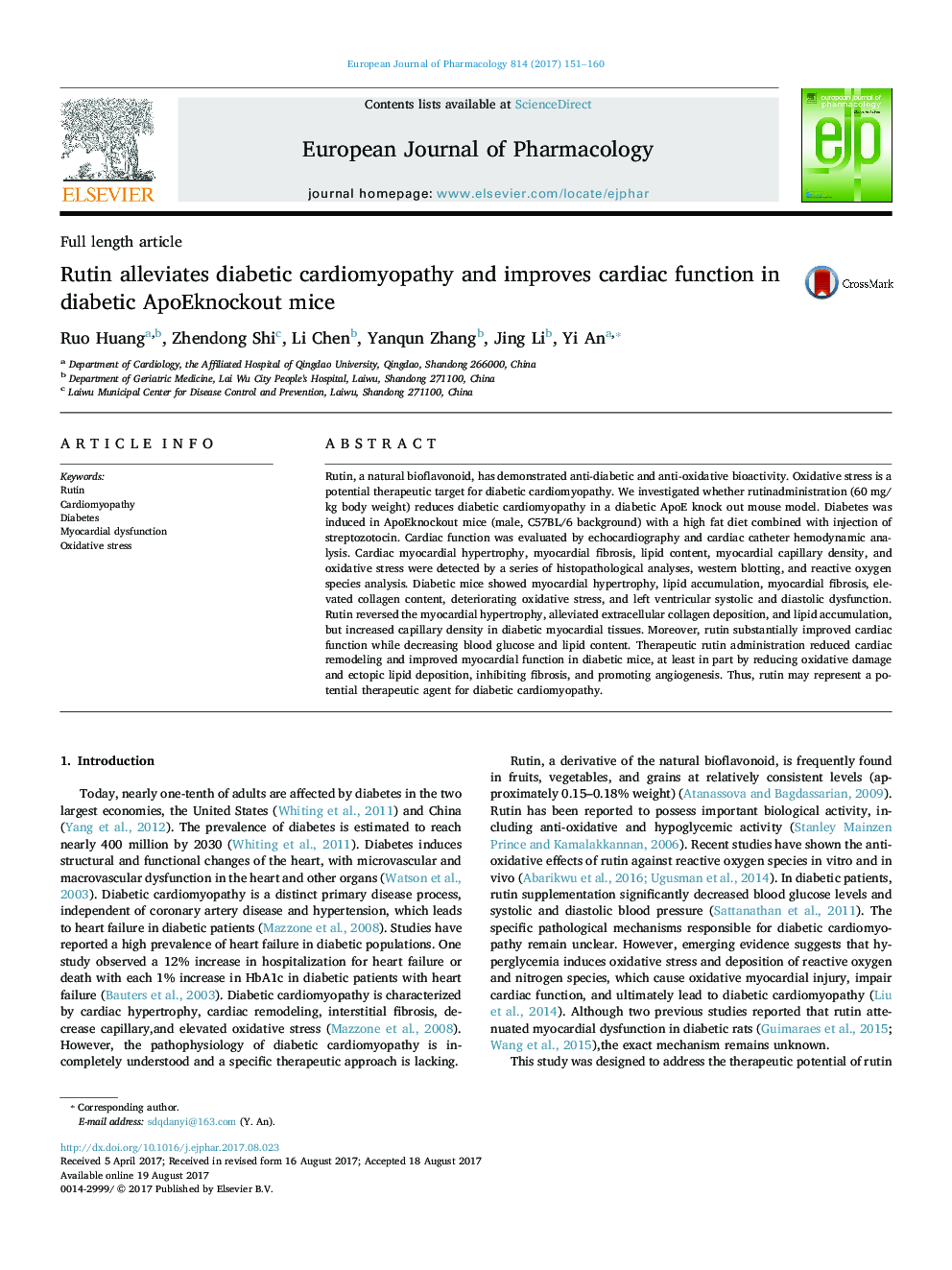| Article ID | Journal | Published Year | Pages | File Type |
|---|---|---|---|---|
| 5554374 | European Journal of Pharmacology | 2017 | 10 Pages |
Rutin, a natural bioflavonoid, has demonstrated anti-diabetic and anti-oxidative bioactivity. Oxidative stress is a potential therapeutic target for diabetic cardiomyopathy. We investigated whether rutinadministration (60 mg/kg body weight) reduces diabetic cardiomyopathy in a diabetic ApoE knock out mouse model. Diabetes was induced in ApoEknockout mice (male, C57BL/6 background) with a high fat diet combined with injection of streptozotocin. Cardiac function was evaluated by echocardiography and cardiac catheter hemodynamic analysis. Cardiac myocardial hypertrophy, myocardial fibrosis, lipid content, myocardial capillary density, and oxidative stress were detected by a series of histopathological analyses, western blotting, and reactive oxygen species analysis. Diabetic mice showed myocardial hypertrophy, lipid accumulation, myocardial fibrosis, elevated collagen content, deteriorating oxidative stress, and left ventricular systolic and diastolic dysfunction. Rutin reversed the myocardial hypertrophy, alleviated extracellular collagen deposition, and lipid accumulation, but increased capillary density in diabetic myocardial tissues. Moreover, rutin substantially improved cardiac function while decreasing blood glucose and lipid content. Therapeutic rutin administration reduced cardiac remodeling and improved myocardial function in diabetic mice, at least in part by reducing oxidative damage and ectopic lipid deposition, inhibiting fibrosis, and promoting angiogenesis. Thus, rutin may represent a potential therapeutic agent for diabetic cardiomyopathy.
Graphical abstractDownload high-res image (161KB)Download full-size image
